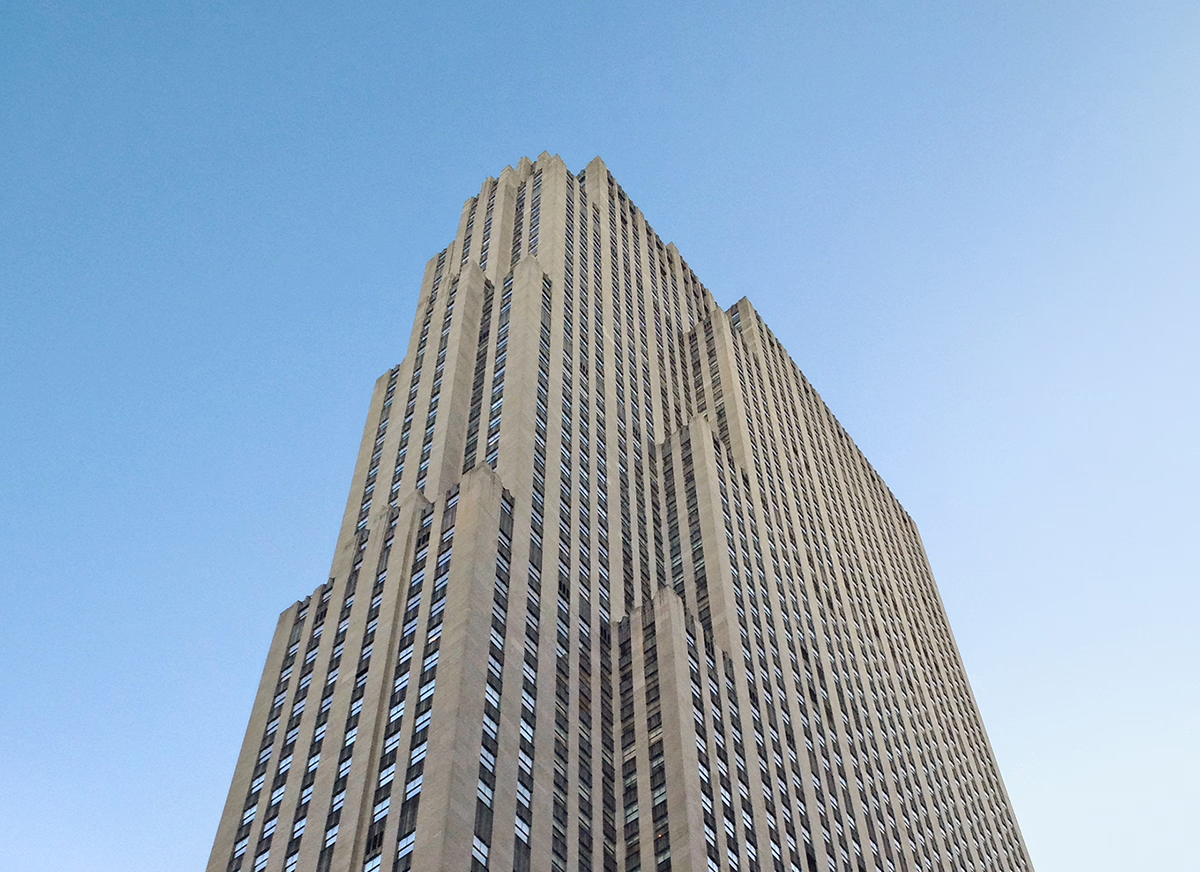Fred F. French Building vs 30 Rockefeller Plaza Buiding


Comparing the Fred F. French Building and the 30 Rockefeller Plaza Buiding is interesting because they both rise in New York, NY, yet they were conceived by two different design teams, H.Douglas Ives and Howells & Hood, and were completed at different points in time. They were finished more than 6 years apart.
This contrast within the same city allows us to see how different creative minds interpreted the evolving needs of New York across time.
Let's take a closer look!
Height & Size
The 30 Rockefeller Plaza Buiding is clearly the larger tower of the two, both in terms of height and number of floors. It rises to 853ft (260m) with 70 floors above ground, while the Fred F. French Building reaches 427ft (130m) with 38 floors above ground.
Of course, each project may have faced different briefs or regulatory constraints, which we don't really know about and could also explain the outcome.
Architectural Style
Both the Fred F. French Building and the 30 Rockefeller Plaza Buiding were designed in line with the aesthetic conventions of the Art Deco style.
At the time, this style was at the height of its popularity. So both H.Douglas Ives and Howells & Hood followed what was in many ways expected of them, producing designs that fit comfortably within contemporary architectural norms, rather than breaking with convention.
Uses
Both the Fred F. French Building and the 30 Rockefeller Plaza Buiding were designed to serve as commercial towers, and that has remained their main use since their completion, serving similar roles in the urban fabric.
Structure & Facade
Both the Fred F. French Building and the 30 Rockefeller Plaza Buiding rely on a Frame structural system.
A frame structure uses a grid of columns and beams to carry the building's loads. This frees the walls from structural duties, allowing for flexible floor plans and larger windows.
They also employ the same type of facade, a Masonry facade.
A masonry facade gives the building a heavier, more traditional appearance. It often conceals a frame structure behind it, creating the look of solid walls without carrying the main loads.
| Fred F. French Building | 30 Rockefeller Plaza Buiding | |
|---|---|---|
| H.Douglas Ives | Architect | Howells & Hood |
| 1925 | Design Ended | 1931 |
| 1926 | Construction Started | 1932 |
| 1927 | Year Completed | 1933 |
| Art Deco | Architectural Style | Art Deco |
| Commercial | Current Use | Commercial |
| 38 | Floors Above Ground | 70 |
| 130 m | Height (m) | 260 m |
| 39,964 m² | Usable Area (m²) | 195,095 m² |
| 11 | Number of Elevators | 60 |
| Frame | Structure Type | Frame |
| Steel | Vertical Structure Material | Steel |
| Concrete | Horizontal Structure Material | Concrete |
| No | Facade Structural? | No |
| Bricks | Main Facade Material | Limestone |
| Fred F. French | Developer | John D. Rockefeller Jr. |
| Otis | Elevator Company | Westinghouse |
| Clyde R. Place | Structural Engineer | Edwards & Hjorth; H.G. Balcom & Associates |
| Vincent Glinsky | Collaborating Artist | Lee Lawrie |
| NY | State | NY |
| New York | City | New York |
| 551Fifth Avenue | Address | 30 Rockefeller Plaza |